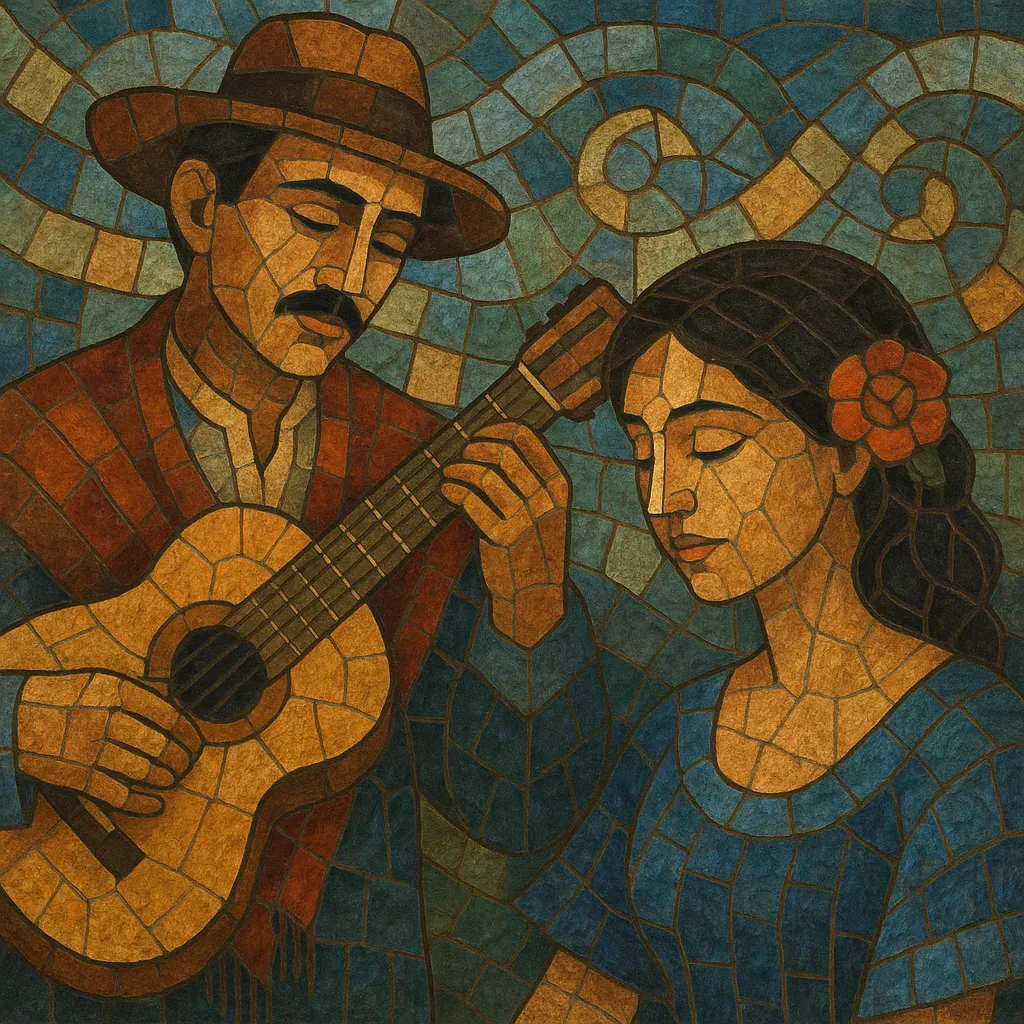Pasillo is an Andean waltz-derived genre that blossomed in the late 19th century, becoming a hallmark of urban salon and popular music in Ecuador and Colombia. Characterized by a 3/4 meter and a generally slow, expressive tempo, it blends European Romantic-era harmony with Andean melodic contours and poetic, often melancholic lyrics.
Two broad currents coexist: a slow, song-oriented pasillo canción favored for intimate singing and guitar- or requinto-led accompaniment, and a more agile, instrumental variety suitable for parlor performance and dance. In Ecuador, pasillo rose to the status of national genre, while in Colombia it thrived within the Andean string-trio tradition (bandola, tiple, and guitar).
Pasillo emerged in the Andes during the 19th century as local musicians adapted the European waltz to regional tastes. Urban salons and civic gatherings popularized the style, and the aesthetic of Romantic classical music—singable melodies, expressive rubato, and sentimental poetry—shaped its identity.
By the late 1800s and early 1900s, pasillo had taken firm root in Ecuador and Colombia. In Ecuador, it became a vehicle for national sentiment and urban romanticism, often sung with guitar and later requinto, evolving into the emblematic genre of the country. In Colombia, it flourished in Andean string ensembles featuring bandola, tiple, and guitar, sharing repertoire spaces with bambuco and other regional airs.
The advent of recording and radio propelled pasillo beyond local salons. Singers and composer-performers on both sides of the border popularized classic pieces, cementing the genre’s melancholic, poetic image. Ecuador produced iconic voices that defined the pasillo canción, while Colombian composers enriched the instrumental tradition and formal variety.
Though superseded in mass markets by bolero, balada, and later pop idioms, pasillo remains a living tradition. Revivalists, guitar-requinto virtuosi, and Andean string trios continue to perform canonical works, while music schools and cultural institutions keep the repertoire active. Contemporary interpretations retain the 3/4 core, expressive rubato, and lyrical poignancy that distinguish the genre.


